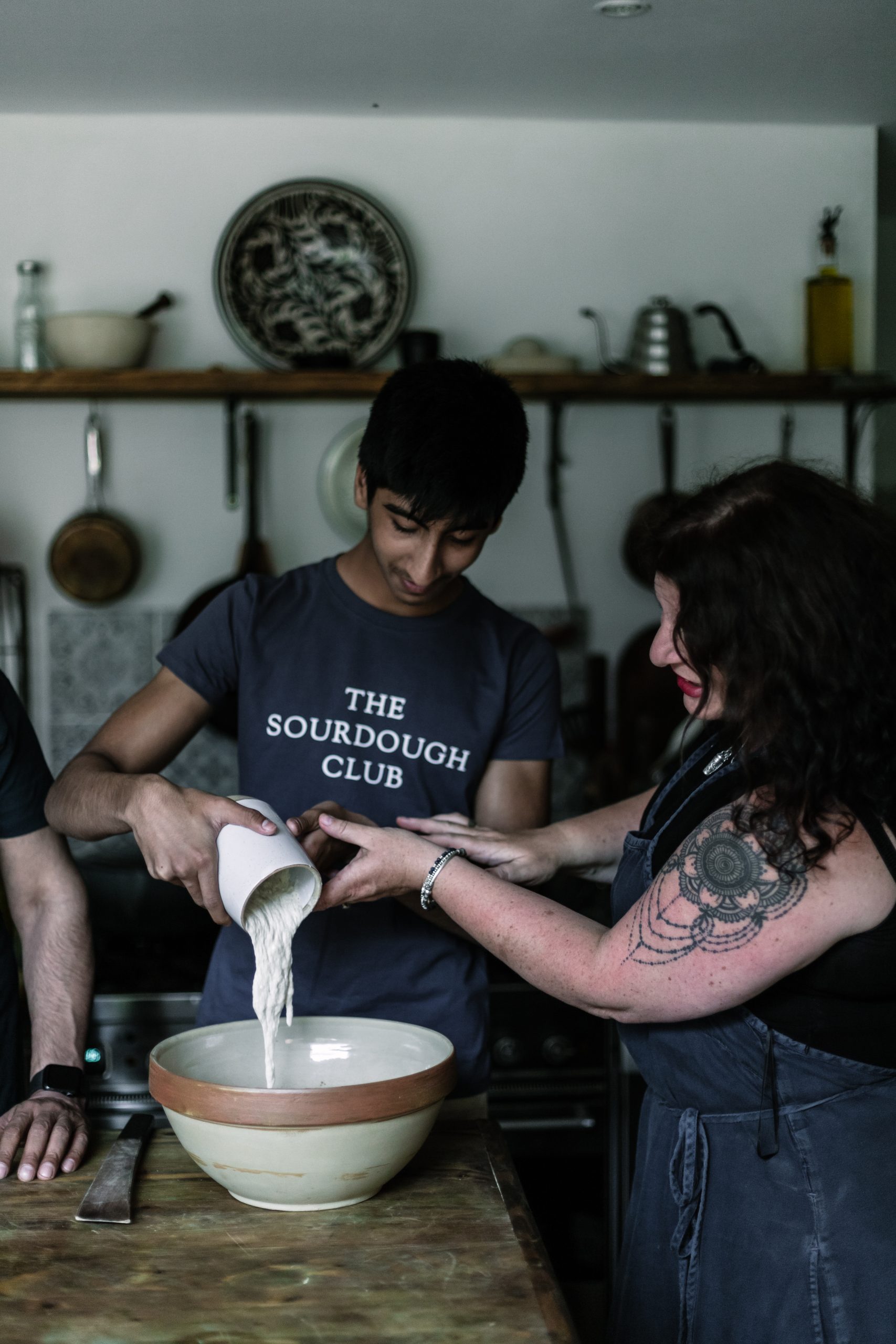In the video above baker Dr Vanessa Kimbell gives you an overview of what a sourdough starter is, with particular references to make a sourdough boule.
What Is a Sourdough Starter?
A sourdough starter is a natural leaven made from just flour and water. This living culture hosts wild yeasts and lactic acid bacteria that ferment dough. The yeasts produce carbon dioxide, making bread rise, while the bacteria create lactic and acetic acids that give sourdough its tangy flavour and improve nutrition.
Different starters may contain species such as Candida humilis, Saccharomyces cerevisiae, and Kazachstania exigua. Their composition varies depending on the flour, environment, and the baker’s care.

Why Start One (And Keep It Alive)?
Maintaining a sourdough starter helps bakers create bread with consistent flavour and texture. Over time, a mature culture becomes stronger, more resilient, and capable of producing loaves with deep flavour and better digestibility.
At The Sourdough School, we teach practical methods for managing starters during our BALM workshops and Diploma courses. Students learn how flour choice, hydration, and feeding schedules affect their starter’s health and performanceHealth, Fermentation and Bread Quality
A good starter does more than leaven. The acids produced during fermentation help reduce phytic acid, which otherwise binds minerals like iron and zinc. This boosts nutrient absorption. Sourdough also tends to partially break down gluten, which may help with digestibility for some people.
Our Proven Bread subscription utilises well-maintained starters to deliver loaves that taste good and support gut health. Each loaf comes from diverse microbes and high-fibre flours.
How to Cultivate and Care for a Starter
Begin with equal parts flour and water. Let the mix rest at room temperature. Feed regularly with fresh flour and water. Over a few days, bubbles should appear, indicating active fermentation. Maintain your starter by feeding on a schedule. If neglected, you may see “hooch”, the darker liquid that accumilates on top, or smell off-flavours; both can be addressed by refreshing feedings. You can find our step-by-step guide to creating your own here.
In our 3-Day BALM Workshops, we guide students through the entire process: starting, feeding, reviving neglected starters, and using them to bake flavourful, nutritious loaves.



